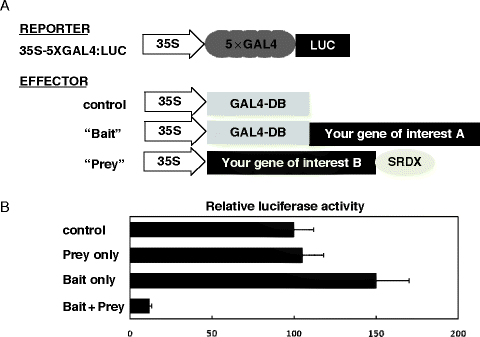

These responses are spatiotemporally controlled at the transcriptional level by transcription factors, activators or repressors, which modulate gene transcript levels, coordinate the transcriptional levels of genes within a single genetic pathway and orchestrate genomic expression at the cellular and system levels (Stam et al., 1997). Plants have evolved sophisticated molecular mechanisms that control their adaptive responses to dynamically changing environments. Our data indicate that the CRISPR/dCas9 DNA-targeting platform can be used in plants as a functional genomics tool and for biotechnological applications. Thus, our results suggest that the synthetic transcriptional repressor (dCas9:SRDX) and activators (dCas9:EDLL and dCas9:TAD) can be used as endogenous transcription factors to repress or activate transcription of an endogenous genomic target. Further, the dCas9:SRDX-mediated transcriptional repression of an endogenous gene.
#SRDX AS A SUPPRESSOR FOR TRANSCRIPTION FACTORS .DLL#
Our data demonstrate that dCas9 fusion with the EDLL activation domain (dCas9:EDLL) and the TAL activation domain (dCas9:TAD), guided by gRNAs complementary to selected promoter elements, induce strong transcriptional activation on Bs3::uidA targets in plant cells. To generate a transcriptional repressor, we fused the dCas9 C-terminus with the SRDX repression domain. To generate transcriptional activators, we fused the dCas9 C-terminus with the activation domains of EDLL and TAL effectors. Here, we modified this DNA-targeting platform for targeted transcriptional regulation in planta by developing chimeric dCas9-based transcriptional activators and repressors. A recent study used the catalytically inactive Cas9 (dCas9) protein combined with guide-RNAs (gRNAs) as a DNA-targeting platform to modulate gene expression in bacterial, yeast, and human cells. The type II CRISPR/Cas system has been adapted for genome editing in many cell types and organisms. Bacteria and archaea use clustered regularly interspaced short palindromic repeats (CRISPRs) and CRISPR-associated (Cas) regulatory systems for adaptive molecular immunity against foreign nucleic acids introduced by invading phages and conjugative plasmids. Targeted genomic regulation is a powerful approach to accelerate trait discovery and development in agricultural biotechnology.


 0 kommentar(er)
0 kommentar(er)
